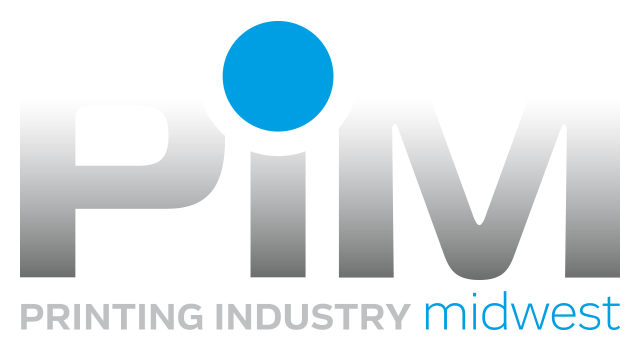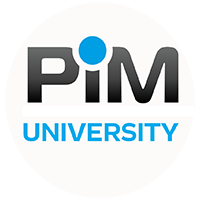PIM DE&I Frequently Asked Question (FAQ)
Diversity, Equity & Inclusion (DE&I) is a big topic that brings up a ton of questions. Printing Industry Midwest (PIM) has captured question our members have asked about our DE&I Accreditation Program as well as additional DE&I questions. If you have a question about our program or DE&I topics that you would like answered, please email Kristin Pilling-Davis & Sadie Johnson at diversity@pimw.org.
Program FAQ
Q: How many star levels are there in this program?
A: There are four-star levels – Commitment, Aim, Momentum & Excellence. Each star has an objective, required steps, resources and the next steps you must follow to achieve accreditation. Once you achieve the fourth star, Excellence, your next goal is to maintain your four-star status and continue to grow your DE&I efforts every year. Each year tackle a new action plans/goals to become more diverse and inclusive.
Q: How long does it take to complete each star level?
A: Each company is different. It depends on how large the company is, how many people are working on these tasks and you & your organizations dedication.
On average it takes a company 1 year to 1.5 years to complete Star 1.
- A larger company with 2-3 Human Resource Professionals working on Star 1 tasks, it took them about 8 months to complete Star 1.
- A larger company with a committee team of 13 professionals working on Star 1 tasks, it took them about 1 year and 2 months.
- A smaller company with 1 non-Human Resource Professional working on Star 1 tasks, it took them about 1 year and 7 months
Q: Is there a time limit to complete each star level?
A: No, there is no time limit to achieve your stars. PIM and the Diversity Coalition understands it takes time to improve and implement a new process. Each month PIM will send you a Monthly Check-In Form and at the one-year mark, PIM will send you an Annual Check-In Form to evaluate your organizations progress.
Q: What are some of the things that need to be done in Star 1 – Commitment?
A: Star 1 is all about your organizations COMMITMENT to DE&I. So, everything you do for this star level is building a foundation and relationships with others. Some things you will have to do are…
- Create a Diversity Committee within your organization.
- Commit to adopting PIM’s DE&I Pledges for Action.
- Create an outline of your organizations DE&I Plan & Goals.
Q: Is there a place to ask question and learn from other organizations in this program?
A: YES! PIM has created a Gaggle Mail “listserv” for everyone enrolled in this program. This is a safe place to ask questions and get support from your peers. PLUS, each quarter
PIM hosts a “PIM DE&I Connect,” a virtual meeting to ask DE&I questions, hear what others are doing well & setback they have had and of course celebrate others wins.
Q: We wish there was a recommended vendor list/pre-vetted course for onsite training that would qualify for what is required.
A: We have a blog post, click here, that lists our recommended vendors. The more companies that complete this program and suggest quality vendors, we will add them to the list. PIM Coalition members will review and approve suggested vendors as well as find more options.
Gaggle Listserv FAQ
Compensating Employees on a Committee
Q: April 14, 2022 – When creating a DE&I committee within an organization, how do you handle the compensation for those on the committee?
A: We do not compensate people for being on different committees within the company.
A: Our meetings are held during the normal work day and participation is on a volunteer basis so they do not receive additional compensation for participating in committees.
A: We do not compensate anyone for being on a committee—it is totally a personal choice that they make as to if they want to be on the committee and take on that extra time responsibility and commitment.
A: We do not currently compensate our team members separately or additionally for committee participation. We do pay their regular compensation/salary for all committee meetings, preparation time, etc.
A: Any meetings occur during the day, voluntary participation, and are considered an opportunity for professional development. The payoff is the outcomes of the committee work and the experience of working on a committee.
A: Much like the answers previously submitted, we treat this committee like we do our other employee committees. Unless someone needs to clock-in early and/or later to attend the meeting, we do not compensate extra. We too consider this part of employee development. We conduct our meetings during company time, also.
Gender Neutral Bathroom
Q: November 3, 2022 – Have you incorporated gender neutral bathrooms at your organization and what policies were put in place for them? Would also like to know if anyone has been advised by an employee that they are transitioning and what sort of policies or procedures that you had in place to inform company, etc.
A: We have 2 single user Gender Neutral bathrooms in our facility. There are no policies in place, they are open and available for everyone to use. We also have traditional Mens and Womens multi-user restrooms available.
A: We have three single user restrooms all of which are marked gender neutral. One also has a urinal in it, and I generally like to give new folks the heads up about that. But, anyone is welcome to use it and it is marked gender neutral.
A: We have several single-occupancy restrooms at all of our sites that are close to workstations.
Transitioning
Q: November 10, 2022 – Has anyone been told by an employee that they are transitioning. What sort of policies or procedures does your organization have to help with the transition? Like changing their name, their email, how they would be identified, etc.
A: We’ll gladly make changes to names, emails, pronouns as folks request (whether they are transitioning or any other reason). We invite them to be a part of controlling and sharing that news with others if they wish – whether helping us craft an announcement they are comfortable with, sharing on their behalf, or allowing them to share that information themselves. We use their desired name as much as possible (obviously, we use their legal name/gender where we are legally obligated to). The last bit of advice I’d like to offer is – share pronouns regularly. If you’re only ever acknowledging them when folks are transitioning or for people using “they/them” pronouns, they’ll likely feel singled out or put on the spot. The more you use them, the more folks will feel included. We include pronouns with all new hire introductions just like we would with each persons’ name and title.
A: While we may have transgender employees, or employees in transition, the question has not come up yet. If HR was asked, we would align with OSHA and our non-discrimination policy—they should utilize the common restroom that corresponds to their gender identity and in which they feel the safest or a single-occupancy restroom. Other employees may share they are uncomfortable. If your non-discrimination policy is in place, then there are clear expectations that promote fair and equitable treatment of all employees.
Pronouns
Q: August 1, 2023 – What are pronouns and why do they matter?
A: When we refer to “personal” pronouns, we don’t mean that these pronouns are necessarily private information (generally they are not), we mean that they are pronouns referring to a unique and individual person. Continue Reading the Article, Click Here.
Star Levels FAQ
Committee – From Star 1
Q: How many people should be on the committee?
A: It is a balancing act; you want everyone’s voice to be heard but bigger groups can be harder to manage and people might not be as comfortable to share. DE&I is a sensitive subject and can be tough to talk about some issues. We suggest 5-8 people. There is no right or wrong way to create a committee. Some organizations have bigger committees and others have smaller. Do what fits your organization.
An idea: If you have a lot of interested people wanting to join. You could have a main committee (smaller group) to map out the goals/plan and a bigger group to help get the actions done.
Q: Who should be in your committee?
A: First, you could target a few specific people, from all departments (Executive Leadership, Human Resources, Marketing, Production, etc. ) and after that, if you want more, open it to all.
Q: Do you have any recommendations for engaging people to form our committee?
A: Send an organization wide emails or hang a poster in a break room about forming a DE&I committee. You could send a survey to your employees and see who would be interested in joining. During a staff meeting or individual ask people if they would like to join the DE&I committee
Q: How do you to get your committee share and open up?
A: DE&I is a big topic and understand it will take some time to get a group to feel comfortable with each other. Here are a few different ideas to help.
- Host your committee meetings around the lunch hour. Bring in lunch for the group from a local restaurants. Try different ethnicities of food.
- Instead of also having one person lead the meetings. Ask different committee members to take turns leading the meetings.
- Have meetings months or every 6 weeks. The more the group meets the easier it will be to get comfortable with one another.
- Look into bring in a DE&I speaker or Community Based Organization (CBO) to talk to the group.
- Host the meeting in different locations. Go outside, volunteer somewhere, go to a restaurant, etc.


